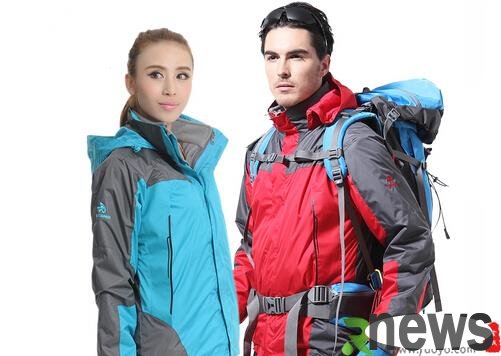The reason why windbreaker can become the first choice for all outdoor enthusiasts is determined by its all-weather function. General windbreaker clothing is mainly reflected in the characteristics of waterproofing. What is a windbreaker? How to was...
The reason why windbreaker can become the first choice for all outdoor enthusiasts is determined by its all-weather function. General windbreaker clothing is mainly reflected in the characteristics of waterproofing.

What is a windbreaker? How to wash windbreakers? What is windbreakers?, also known as windbreakers or raincoats, are one of the essential equipment for outdoor sports enthusiasts. Whether it is a city leisure person or an ordinary weekend outing enthusiast, whether you are doing medium and long-distance hiking and mountaineering, professional adventure, ice climbing, or even climbing seven or eight thousand meters of snow-capped mountains, an all-weather jacket that suits you is a must-have for you.
The reason why the jacket can become the first choice for all outdoor enthusiasts is determined by its all-weather function. General windbreaker clothing is mainly reflected in the characteristics of waterproofing. In terms of fabric design and processing, general windbreakers are made of PU waterproof coating + glue at the joints. The disadvantage is that the clothes are not breathable and windproof. As the name suggests, the windbreaker is the clothes worn when rushing to the top and is one of the essential equipment for outdoor sports enthusiasts. From the perspective of modern mountaineering, several conditions should be met for windbreakers: First of all, they meet the requirements of mountaineering in structure. Mountaineering often carries out various activities in harsh environments, including walking with loads, technical climbing, etc. The structure of windbreakers must be able to meet the requirements of these activities. Secondly, the materials for making must meet the requirements of mountaineering. Due to the special environment in which mountaineering is located and the needs of mountaineering, the materials of the windbreaker must be able to achieve windproof, waterproof, breathable and other requirements.
How to wash the jacket
Hand wash
1. Use neutral detergent, use warm water not exceeding 30 degrees, and then soak the jacket for about 5 minutes;
2. Use a soft brush to brush the dirty parts of the jacket, be careful not to use too much force;
3. Use a large amount of clean water to rinse the detergent thoroughly;
4. Do not put the jacket in the jacket If you do wring and dry, you should be placed directly in a natural environment to dry it, and you should also pay attention to avoid exposure to sunlight;
5. Do not iron the jacket at high temperature;
6. Unless the jacket is really dirty, you do not need to wash the jacket frequently to avoid damage to the jacket;
7. In order to better maintain the jacket, you should regularly use water splashing agent to repair and maintain the waterproofness of the jacket.
Machine Washing
1. Washing: The washing machine must be able to adjust the appropriate washing rhythm and strength. When washing the jacket, pay attention to avoid washing friction and damage the waterproof coating of the jacket;
2. Rinse: The washing machine must have foam self-test technology to completely remove detergent residues and avoid chemicals from damaging the waterproof coating;
3. Dehydration: The washing machine cannot damage the coating of the jacket during the process of slowly removing the water from the jacket;
4. Drying: The washing machine can dry the jacket at a low temperature not higher than 55 degrees, which can avoid damage to the waterproof and breathable coating at high temperatures; if professional water-spraying agents can be used, the effect will be better.
Surf jacket fabrics
The fabrics used in surf jackets can basically be divided into two categories:
One is a microporous fabric with ePTFE composite film. Currently, most of them are GORE-TEX, DENTIK, EVENT, and 3TO1-TEX in China. Its waterproof and breathable function is to combine a microporous film on the outer fabric of the clothing. The micropores in it are smaller than water drop molecules and larger than gas molecules. It can evaporate its own sweat while blocking rainwater.
Another type is a hydrophilic fabric with PU or TPU coating (or composite film), whose function is achieved by the non-porous waterproof layer and the hydrophilic molecular chain structure. Except for ePTFE composite film, other brands are in this category. Comparison of these two types of materials: the advantages of
ePTFE fabrics are both waterproof and breathable, especially in low temperature states, which are stable (snow mountain climbers wear such clothing thanks to this characteristic), and have a wide range of applications. The disadvantage is that the wash resistance is slightly poor and the price is high. The advantages of
PU-type fabrics are their good durability and low price. The disadvantage is that the breathability is poor, especially when the ambient temperature is low, the unstable material properties will cause the breathability to be reduced, and the scope of application is not as wide as the former.